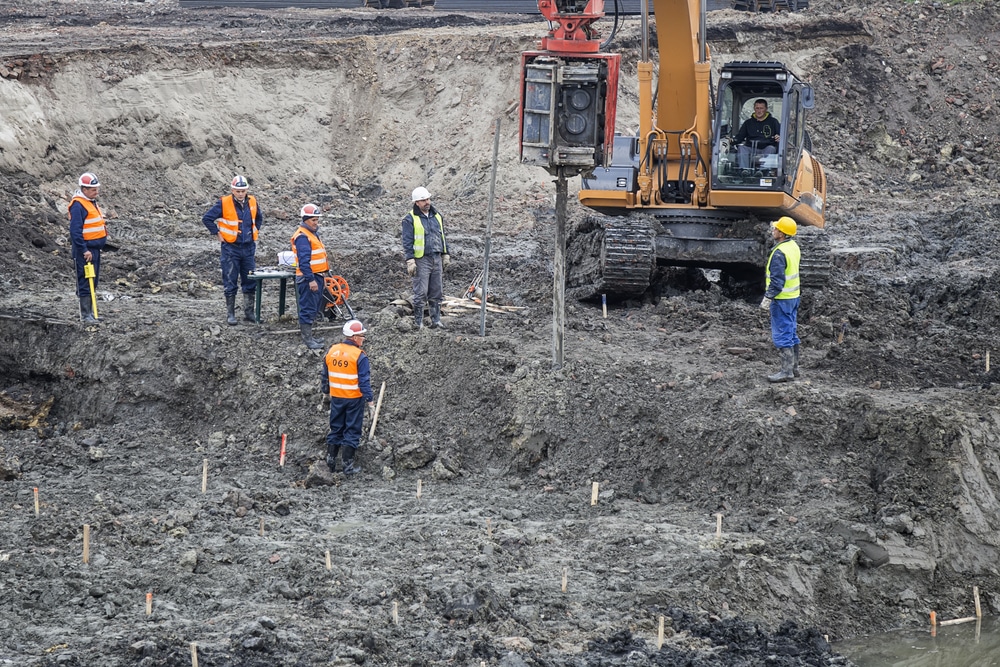The Function of an Engineer of Record in Ensuring Structural Integrity and Conformity
The Function of an Engineer of Record in Ensuring Structural Integrity and Conformity
Blog Article
The Interdisciplinary Approaches in the Geotechnical Market: Bridging the Gap In Between Engineering, Geology, and Environmental Science for Ideal Task Results
The combination of engineering, geology, and ecological science within the geotechnical market is not just advantageous; it is necessary for achieving ideal project results. What strategies might emerge to promote this important collaboration and boost the efficacy of geotechnical techniques?
Value of Interdisciplinary Collaboration
The value of interdisciplinary partnership in the geotechnical market can not be overemphasized. Effective geotechnical jobs need the integration of diverse expertise from different fields, consisting of design, geology, and environmental science. This collaboration makes certain that all facets of a task are thought about, resulting in thorough services that address complex obstacles.
When functioning in isolation,Interdisciplinary collaboration cultivates development by making it possible for professionals to share understandings and methodologies that might not be evident. By leveraging the staminas of several techniques, teams can identify possible risks, optimize style processes, and improve the sustainability of geotechnical tasks. Such cooperation advertises an alternative understanding of site-specific conditions, which is important for precise assessment and decision-making.
The intricacy of geotechnical projects requires a worked with strategy to analytic. Ultimately, interdisciplinary partnership is essential for progressing finest practices and attaining quality in the geotechnical industry.
Secret Duties of Each Discipline
Partnership amongst various techniques is not just useful; it is essential for the effective implementation of geotechnical projects. Each self-control-- engineering, geology, and ecological scientific research-- plays an unique yet interconnected function that contributes to forecast efficiency and sustainability.
Geotechnical designers are largely in charge of designing structures and ensuring architectural honesty. They examine dirt and rock buildings to evaluate load-bearing capabilities, offering necessary data for safe building methods. Their proficiency enables the formula of ingenious options to intricate challenges.

Environmental researchers examine the prospective impacts of construction on ecosystems and water sources. They perform ecological evaluations and create mitigation strategies to lessen adverse effects. By incorporating ecological factors to consider, they ensure compliance with policies and promote sustainability throughout the job lifecycle.
Case Researches of Effective Assimilation
Successful integration of geotechnical disciplines can be exhibited with numerous case studies that highlight the efficiency of team effort in resolving intricate design obstacles. One notable example is the building of the Hong Kong-- Zhuhai-- Macau Bridge, where a joint method entailing geotechnical engineering, geology, and ecological scientific research was critical. Rock hounds and engineers functioned in unison to evaluate the seabed problems and optimize the structure design, making sure stability and lessening environmental effect.
One more impactful case is the enhancement of slope security in the San Francisco Bay Area, where an interdisciplinary group incorporated geotechnical analysis with ecological analyses. By incorporating geological surveys and hydrological studies, the team efficiently identified possible landslide dangers and carried out efficient mitigation measures, enhancing safety and security and sustainability.
Furthermore, the redevelopment of Brownfield websites commonly calls for a multidisciplinary method. In one situation in Chicago, collaboration amongst geotechnical engineers, environmental scientists, and urban coordinators resulted in the effective removal of contaminated soil, enabling for the safe improvement of the website into a neighborhood park. These case researches illustrate that interdisciplinary partnership not just addresses technical obstacles but likewise fosters innovative remedies that profit both projects and neighborhoods.
Difficulties in Multidisciplinary Projects

Additionally, coordinating timetables and operations among numerous groups can be problematic, particularly when each self-control has distinct job turning points and deliverables. This misalignment can result in hold-ups and enhanced costs. The difficulty of resource allowance likewise impends big; ensuring that specific know-how is available at important points requires cautious planning and foresight.
Lastly, governing conformity postures an additional considerable challenge. Each self-control might encounter different regulative structures, and straightening these demands to meet job purposes can be complicated and time-consuming. Addressing these difficulties requires strong management and effective communication methods to promote collaboration and make sure that multidisciplinary teams function cohesively towards shared goals.
Future Trends in Geotechnical Practices
As the geotechnical market advances, arising trends are reshaping techniques to resolve the challenges faced in multidisciplinary projects - engineer of record. One considerable fad is the raised combination of advanced technologies, such as fabricated intelligence and artificial intelligence, right into geotechnical analysis and layout. These innovations enhance anticipating modeling and threat evaluation, making it possible for engineers to make even more informed choices throughout the job lifecycle

In addition, the fostering of digital doubles and real-time monitoring systems is coming to be much more prevalent. These devices help with continuous evaluation of dirt problems and structural efficiency, permitting timely interventions when problems emerge.
Conclusion
Finally, the integration of design, geology, and ecological science is vital for achieving optimum end results in the geotechnical industry. Interdisciplinary cooperation fosters technology, enhances problem-solving capabilities, and straightens technological demands with environmental sustainability. Successful situation researches highlight the advantages of this approach, while recognizing the difficulties encountered in multidisciplinary tasks. Looking in advance, welcoming these collective techniques will be important for browsing future trends and progressing the field of geotechnical engineering.
The integration of engineering, geology, and environmental science within the geotechnical sector is not simply useful; it is crucial for attaining ideal project outcomes. Effective geotechnical projects need the assimilation of diverse expertise from different areas, consisting of engineering, geology, and ecological scientific research.Navigating the complexities of multidisciplinary tasks in the geotechnical sector provides numerous substantial difficulties.As the geotechnical sector develops, emerging fads are reshaping methods to deal with the difficulties dealt with in multidisciplinary tasks. Geotechnical designers are significantly collaborating with environmental scientists to make sure that tasks straighten with sustainability goals and conform with regulatory needs.
Report this page